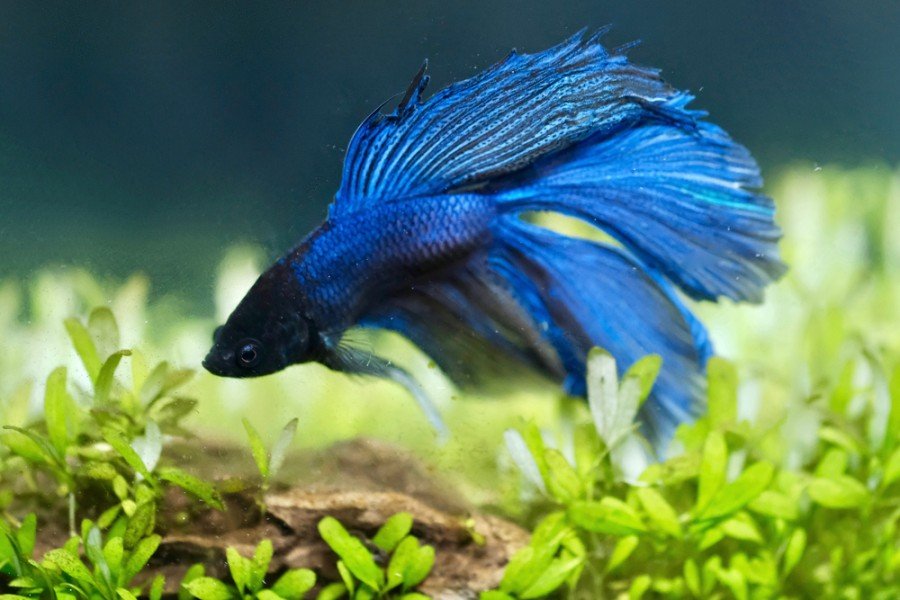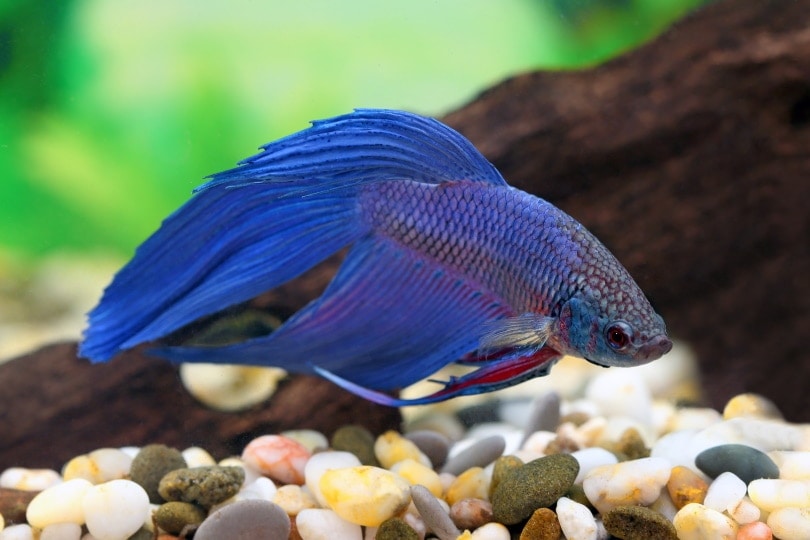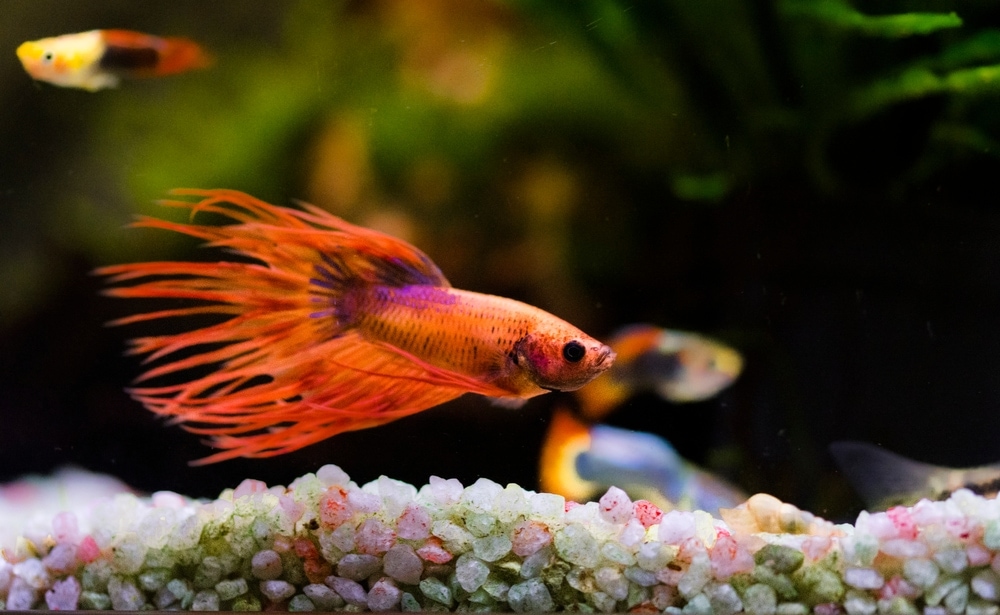How to Tell if Your Betta Fish Is Pregnant: 4 Vet-Approved Signs to Look For
Updated on
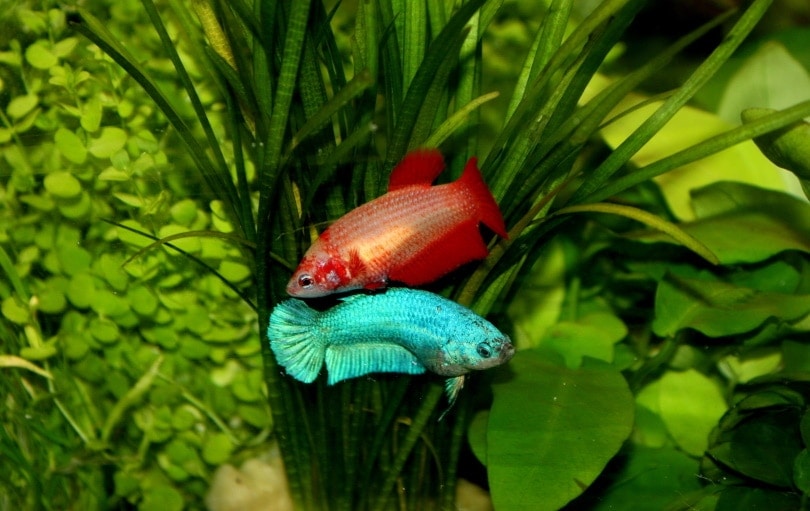
When it comes to fish reproduction, most of us aren’t experts. In fact, most of us know very little about the reproductive habits of our fish. When it comes to keeping Betta fish, you may have hoped to breed your beautiful fish. If you’re interested in breeding your Bettas, you’ve likely done a lot of research on the steps to take to safely introduce your male and female Bettas to each other. However, if you’ve already given them a chance to breed, you may now be wondering how to tell if your female is pregnant. Here is everything you need to know about Betta fish and pregnancy.
A single spawning pair of Bettas can produce over 200 eggs on average. Raising Betta fry isn’t a decision you should take lightly on a whim. It requires a great deal of time, money, space, and extra tanks and is also often associated with heartache in the form of many fry that do not make it to maturity. It is best to leave breeding Bettas to professionals unless you are absolutely certain that you can care for all the fish, grow live cultures, and have the resources required to undertake a spawning.
“Pregnancy” Is a Misnomer
At its very definition, it isn’t possible for Betta fish to become pregnant. The term “pregnancy” indicates that your Betta is carrying fertilized eggs that are developing into fry. Bettas are egg-layers, which means that females will release eggs for the eggs to become fertilized. The eggs will then develop outside the female’s body until they hatch. Betta fish don’t become pregnant, but they do become gravid. Gravid females are females that are sexually mature and are carrying eggs that are nearly ready or ready to be released for fertilization.
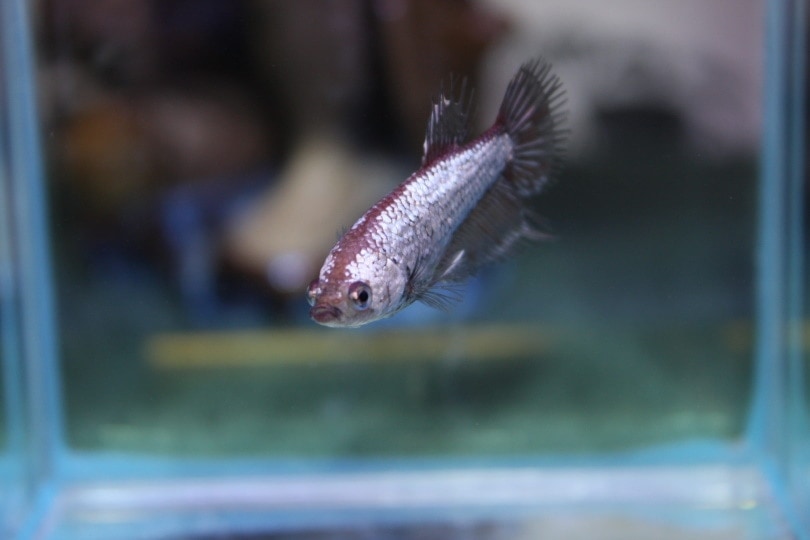
The 4 Ways to Tell if Your Female Betta Is Ready to Breed
1. Check Her Stripes
When female Bettas are gravid, they may begin to develop vertical stripes along the body, typically in groups of five to six stripes total. These stripes will appear in a lighter color than your Betta’s normal coloration. They will likely not be perfectly defined lines and may have slightly jagged edges, but they will be recognizable as vertical stripes. Not all gravid Betta fish develop these stripes, though, so this isn’t the only way to tell if she’s ready to spawn.
2. Look for Mild Swelling On Her Underside
As females become gravid, they will develop slight abdominal rounding due to the development of eggs in the body. This bloating will likely be more noticeable when viewed from above than from the side. Although some downward bloating is possible, outward bloating is more likely. This bloating will be noticeable if you are very familiar with the appearance and size of your Betta, but it will be mild.
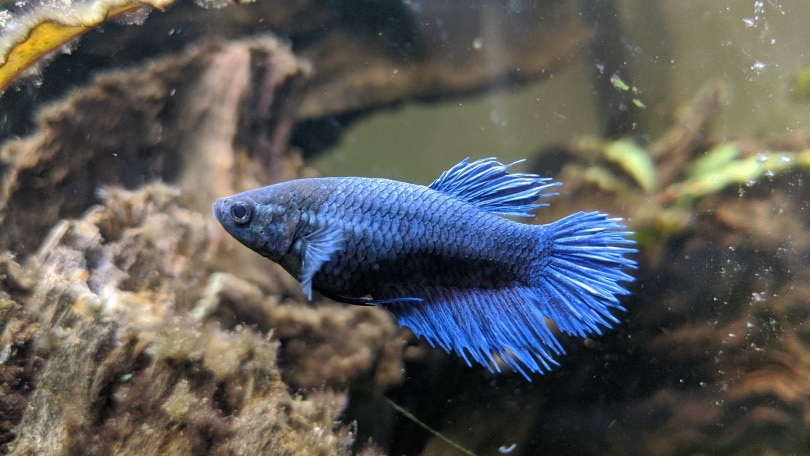
3. Look for Her Ovipositor
The female will release her eggs from a small orifice called the ovipositor. This orifice is located behind the ventral fins and in front of the anal fin, so it is located on the underside of the front half of the body. When a female Betta becomes gravid, the ovipositor will take on a noticeable white color with a slightly outward appearance.
4. Watch for Behavior Changes
If your female Betta lives alone, then you will likely not see behavioral changes. However, if you keep a male and female together, which isn’t generally recommended for permanent keeping, then you may see your female becoming more interested in your male and his bubble nests. Before spawning occurs, a female will look over the bubble nest to see if it’s up to par. If she likes it, then spawning will likely occur shortly after. If she doesn’t like it, she will likely destroy the nest, usually resulting in a fight with the male. You should separate the two fish if this happens.
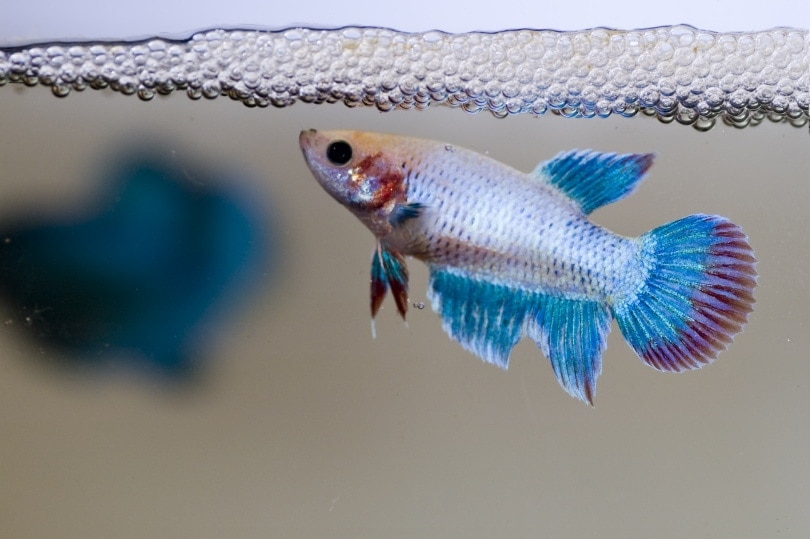
How to Tell if Your Female Betta Is Egg-Bound
Like other egg-laying animals, female Bettas can become egg-bound, although it is unusual in Bettas. An egg-bound female is a gravid female that, for one reason or another, is having difficulty passing the eggs. Sometimes, this will work itself out, and other times, your Betta’s body will reabsorb the eggs, leading to no other problems.
On rare occasions, your Betta may require your assistance to help her pass the eggs. This is a process that involves gently squeezing your Betta’s abdomen to help her release the eggs from her ovipositor. Obviously, this is a delicate process that comes with extremely high risks to your Betta fish. It should only be attempted if you are confident in your ability to do this without hurting her and if you are absolutely certain that your Betta is egg-bound and not experiencing another problem. If you aren’t confident in performing this procedure or if you’re not sure about your Betta’s health, you should have her looked at by an aquatic veterinarian.
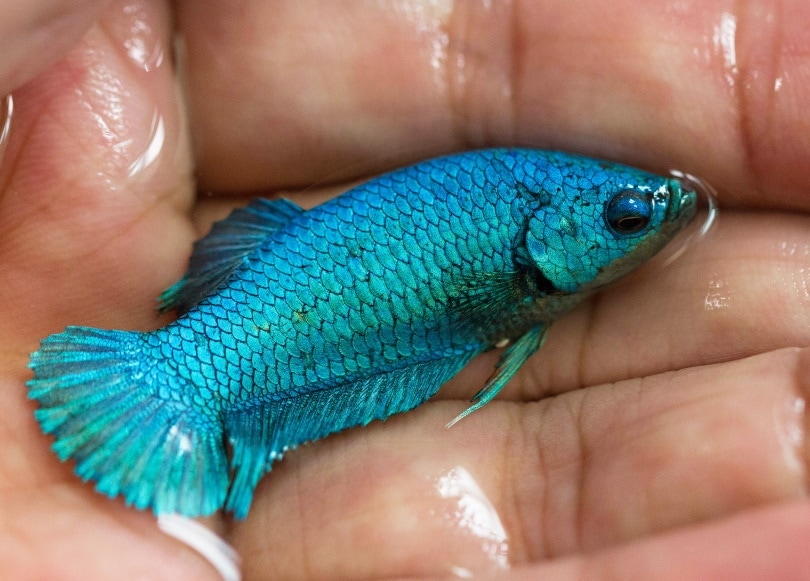
Other Conditions May Be Mislabeled as a Female Being Gravid
Constipation/Bloat
Betta fish are particularly susceptible to becoming constipated due to their high protein diet and our tendency to overfeed them and place them in environments that aren’t appropriate for a tropical fish. If your Betta seems to be bloated and you haven’t seen it produce any poop in a day or so, then she’s likely constipated.
The most common cause of constipation and bloating in Betta fish is overfeeding or an inappropriate diet. If you suspect your Betta is constipated, she may just need to fast for a day or two until she’s able to clear some waste. You can also increase your Betta fish’s activity by providing interesting toys and games and ensuring they’re in an appropriate environment (their ideal temperature is 28°C (82.4°F). Increasing activity can help move things along in the digestive tract.
Dropsy
Dropsy isn’t a disease on its own, but it is a sign of a serious problem. Dropsy is usually identifiable by abdominal swelling and “pineconing”, which is caused by so much abdominal swelling that the scales begin to point outwards. If your Betta is exhibiting Dropsy, then she is already beginning to experience organ failure related to a severe infection. The mortality rate with Dropsy is extremely high, but some people successfully treat it with broad-spectrum medication and a nutrient-rich diet.
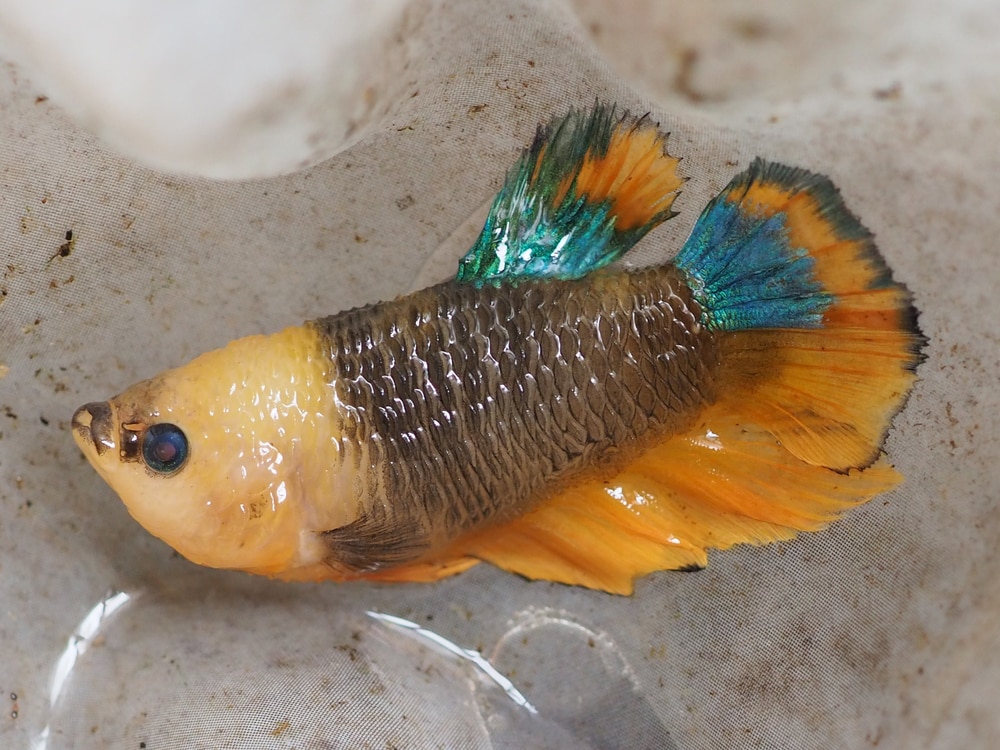
In Conclusion
Betta fish may not be able to get pregnant, but your female Betta fish may become gravid, even if a male isn’t present. If she doesn’t release her eggs, it’s likely her body will reabsorb the eggs. If you notice abdominal swelling, then you’ll need to rule out whether your Betta is gravid or sick. Constipation is a much less severe problem than Dropsy, but they both indicate your Betta is sick and uncomfortable.
If you decide to attempt to breed your Bettas, then you need to make sure to follow all precautions and prepare both the male and female for spawning. Proper precautions will give you the best chance of keeping both Betta fish safe and it also gives you the best chance at successful spawning. The more knowledge you have on fish reproduction, the more successful you’ll be at breeding your Bettas.
Featured Image Credit: Arunee Rodloy, Shutterstock



